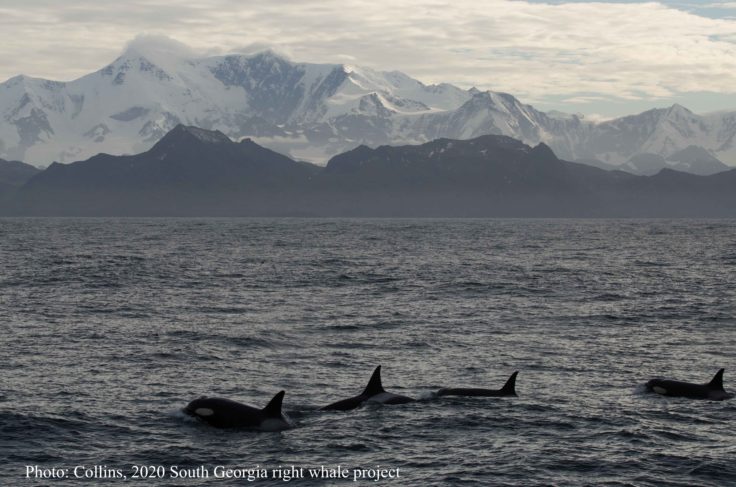The world's largest iceberg is on a collision course with an Antarctic penguin refuge
Iceberg A68 cracked off of Antarctica in 2017 and is large enough to hold the five boroughs of New York five times over.

The world's largest iceberg may be on a collision course with a wildlife haven in the South Atlantic Ocean, researchers at the British Antarctic Society (BAS) reported. If the gargantuan berg becomes grounded near South Georgia island (a British overseas territory and one of the South Sandwich Islands), it could crush animals and block off foraging routes for thousands of penguins and seals — potentially disrupting the island's ecosystem for a decade or more, according to BAS scientists.
"Ecosystems can and will bounce back of course, but there's a danger here that if this iceberg gets stuck, it could be there for 10 years," Geraint Tarling, an ecologist with BAS, said in a statement.
The iceberg in question is known simply as A68a. The massive slab calved from Antarctica's Larsen C Ice Shelf in July 2017, initially measuring more than 2,300 square miles (6,000 square kilometers) in area — an ice raft large enough to hold the five boroughs of New York City five times over. Since then, A68a has been drifting ever northward into warmer waters, gradually shedding little chunks of itself along the way. (As of early April, the hunk of ice still measured about 2,000 square miles, or 5,100 square km, in area, Live Science previously reported).
Recently, satellite images have spotted the berg (which now looks like a hand with one pointing finger) drifting directly toward South Georgia, a small, mountainous island that serves as the breeding ground for hundreds of thousands of seals and penguins.
With a surface area similar to A68a’s, the island ecosystem could be seriously disrupted if the berg makes landfall. In addition to injuring animals during the collision, the iceberg's presence could block the normal feeding and foraging routes that animals use during their crucial chick- and pup-rearing seasons, Tarling said.

"The actual distance [the animals] have to travel to find food (fish and krill) really matters," Tarling explained. "If they have to do a big detour, it means they're not going to get back to their young in time to prevent them starving to death in the interim."
There's still a chance that ocean currents could carry A68a around the island's coast rather than directly into it, Peter Fretwell, a mapping specialist with BAS, said in the statement. If that's the case, then the pups and penguins of South Georgia could even see some dietary benefits; according to Tarling, the vast quantities of dust riding aboard A68a could fertilize nearby ocean plankton, sending those nutrients up the food chain to fish, penguins and seals.
Sign up for the Live Science daily newsletter now
Get the world’s most fascinating discoveries delivered straight to your inbox.
"This plankton also draws in carbon from the atmosphere, partially offsetting human CO2 emissions," Tarling said.
Harbinger of icy doom, or floating nutritional supplement? The destiny of iceberg A68a remains to be seen.
Originally published on Live Science.

Brandon is the space/physics editor at Live Science. His writing has appeared in The Washington Post, Reader's Digest, CBS.com, the Richard Dawkins Foundation website and other outlets. He holds a bachelor's degree in creative writing from the University of Arizona, with minors in journalism and media arts. He enjoys writing most about space, geoscience and the mysteries of the universe.










